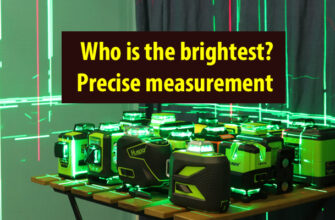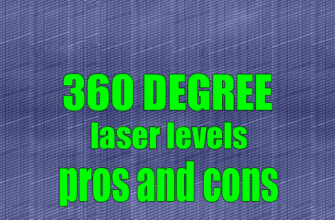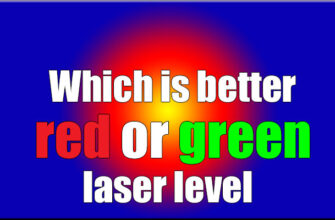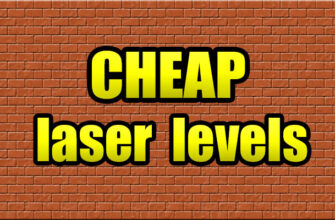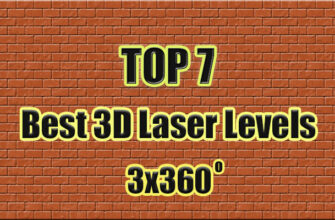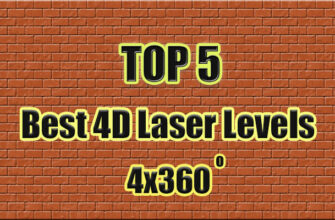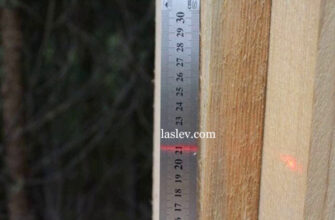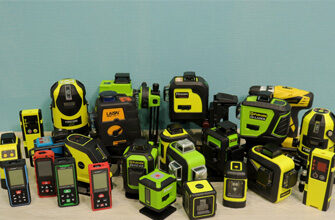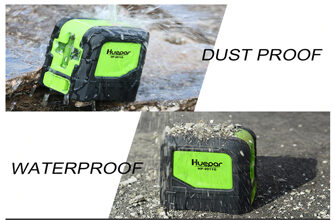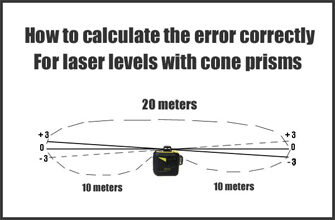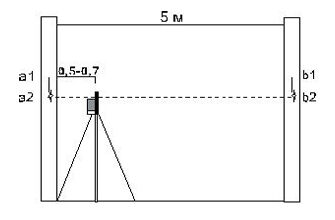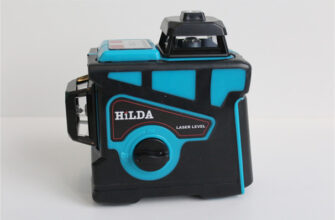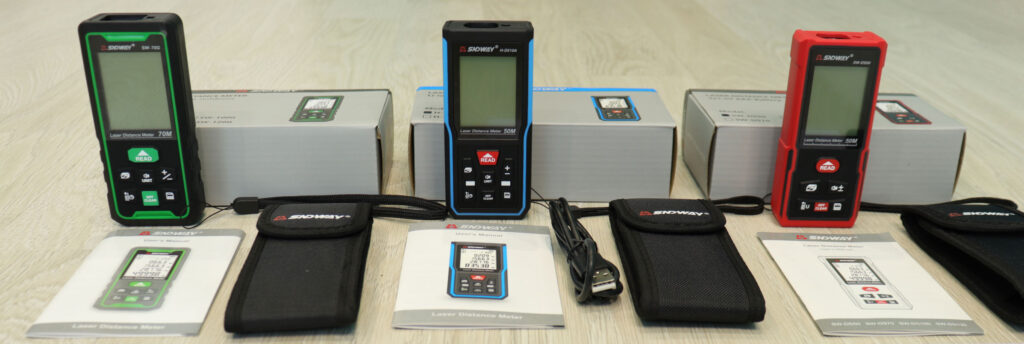
If you decide to buy a laser distance meter, but do not know which one to choose, then this article is exactly for you. So, let’s start with what it is in general.
Rangefinder – this is a remote object distance meter. There are two main types: passive and active, which in turn are divided into subtypes.
There are quite a few types, but in construction it is used – optical, ultrasonic and laser. We will focus on the latter in more detail, and analyze several important criteria for choosing such a device.
Types of distance meters
Optical rangefinder
It belongs to the passive type. From construction devices, it is used in optical levels and theodolites. Here it is also called a filament (thread) rangefinder, since the distance is calculated thanks to the optics and the grid of filaments.

To calculate the distance, you need to multiply the difference between the risks (upper and lower filament) by 100. This results in the desired distance to the Grade Rod, which the operator of the optical level or theodolite looks at through the viewing tube.
Ultrasonic distance meter
It refers to active rangefinders, in which the distance is calculated based on the time and speed of the signal from the signal source to the object and back to the signal receiver. In other words, from the device to the obstacle and back.
In the market of measuring construction devices, they were among the first to appear, but they were never able to win recognition from builders.

The purchase of an ultrasonic distance meter measure is a rather dubious decision, because such a tool has many cons. One of them is low accuracy, and the greater the distance, the higher the error.
Their accuracy is indicated as a percentage of the result. For example, ± 0.5% of the measurement.
The second big minus is that the sound signal propagates with a large scattering in different directions from the center, and not a concentrated beam, like a laser.

Therefore, it is almost impossible to accurately locate a certain point. This leads to such a large margin of error.
Yes, sometimes, in such distance meter, a laser designator is built in, which can be visually aimed at the target. But this also can not guarantee a high accuracy of a couple of millimeters.
Now I’m only talking about the disadvantages associated with the construction. In other areas, ultrasonic distance meter are simply irreplaceable.
Laser distance measure
These are already precise devices that are in demand by both professional builders and home craftsmen. Compared to ultrasonic, laser systems have a lot of advantages in terms of accuracy and functionality.

Now there are a huge number of different models of laser distance meters from different manufacturers on the market. But even from this variety, can single out the undisputed leader – these are Leica laser rangefinders.
If you look at their latest models, you will immediately understand that these are no Laser distance meter, but small total stations in a compact case. To date, such a set of functions can not be found in any other laser rangefinders.
Monocular Rangefinders for Golf and Hunting
Laser rangefinders are not only construction with a screen on which the measurement result is displayed, but also monocular. These are rangefinders mainly designed for hunting and golf.
Such devices quickly calculate the distance to the target in the range of up to 2000 meters (depending on the model), and the results are displayed directly in the eyepiece.

In addition, they can have a number of specialized functions, such as: a ballistic calculator for calculating corrections and a function for calculating the speed of a moving object.
For construction tasks, such rangefinders are not suitable, because they have low accuracy: ± 1 meter.
The principle of operation of the laser rangefinder for golf and hunting is absolutely the same as that of the other two listed above. It is based on the time and speed of the signal passing from the device to the target and back.
The main criteria for choosing a Laser distance meter
And so, let’s look at a several basic points that will help you choose the right laser measure for construction.
Where to use: outdoor or indoor
I recommend that you immediately determine for yourself where you will mainly work with them: on the street or indoors.
For measurements in rooms or large hangars, any Laser distance measure is suitable, but for work in the outdoors, it is better to choose a laser measure with a vizier.
This is really important, because in daylight or sunlight, already at 15-20 meters, the point is not visible, and therefore it is not clear to where the measurement is made.
The built-in vizier will help to avoid such problems. It can be optical or digital. The optical vizier has recently been used very rarely. Of the older models, only the Bosch GLM 250 VF and Leica Disto A5 come to mind.
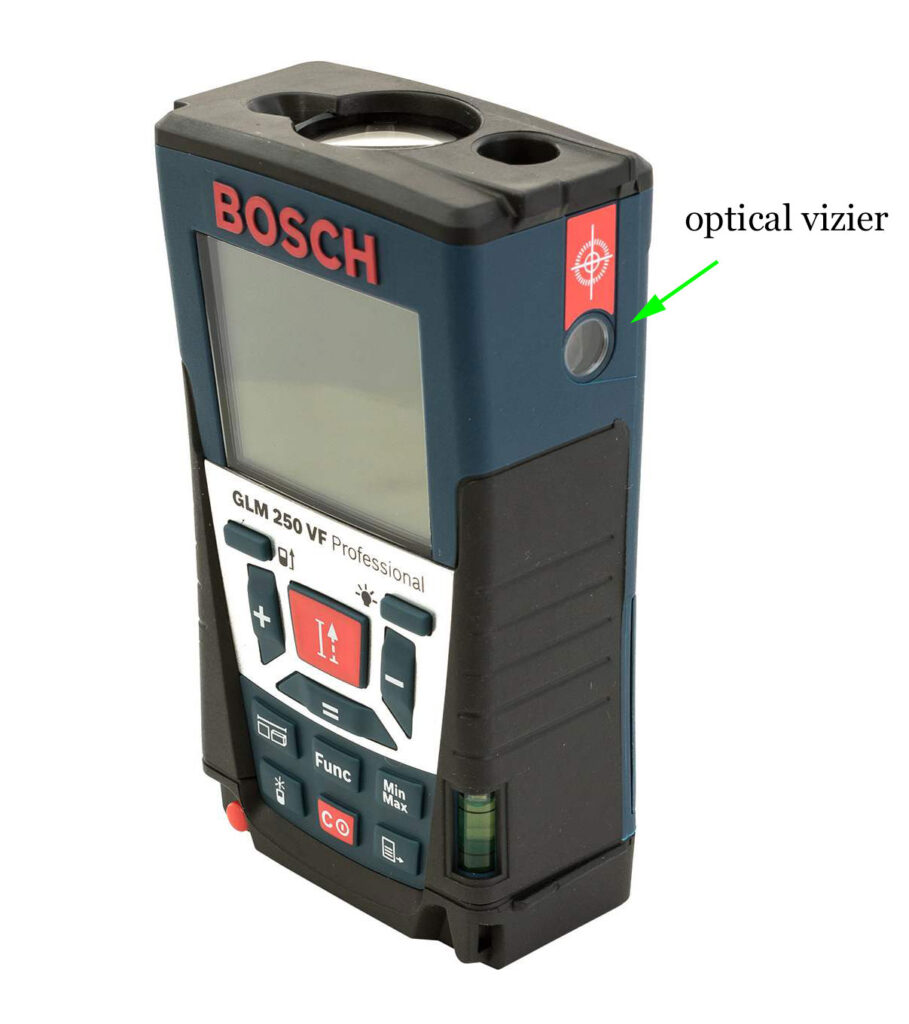
Such a scope, as a rule, has a 2-fold zoom. Thus, when taking measurements on the street, you look into this peephole, as in a scope, and point the crosshair at the right place to which you need to make a measurement.
At the same time, you do not need to see the laser point itself. In principle, a good cheap solution. The only thing is not always convenient to look through the peephole, if the measurement is not done from a tripod.
The second is more expensive, but more convenient – a digital vizier. In fact, this is a built-in camera with a zoom, the image from which is displayed on the screen. Thus, you look at the Laser distance meter screen and use the crosshair to point to the point to which you want to take a measurement.

Such a vizier is much more convenient than an optical one. For example, if you attach a laser measure at the bottom of the wall, then it will be difficult to look through the peephole of the optical vizier, and it will be quite convenient to just look at the screen. Plus, the zoom of the digital vizier is 2 times larger than the optical one.
Today, there are many laser distance meters with a built-in camera. Of the most affordable with good performance quality, two models can be distinguished: the Laser distance meter SNDWAY SW-S120 and the Huepar T7-LM200C.
We decide before buying where we will work more often: if on the street, then we buy with a visier, if in the premises, then any one will fit.
With rare measurements on the street, you can do without a visier, just make a measurement in the evening when it gets dark.
Measuring range
You need to decide on the maximum and minimum length of measurements. Typically, Laser distance meters for construction measure distances up to 30/40/50/60/70/90/100/120/150/200/250/300 meters, depending on the model and manufacturer.
It is also worth paying attention to the minimum calculated distance, usually it is 5 centimeters, but there are models that count only from 50 centimeters.
It is better to choose Laser distance measure, which is capable of measuring from 5 cm.
Measurement accuracy
The third criterion to which you should pay attention is the measurement error. Most laser measure up to $150 have accuracy within the range of ± 1,5-3 mm depending on the specific model.
The highest accuracy of such devices is ± 1 mm, such an error is declared mainly in expensive rangefinders. But here it must be said that such accuracy is not maintained over the entire length of the measured distance. After 30-40 meters, the error will increase proportionally with increasing distance.
Also, the accuracy depends on such factors as sunlight, the measured distance, the immobility of the device during the measurement.
Weighted average error over the entire distance is best preserved in the laser distance meter up to 60 meters.
Functionality
You should decide for yourself what functionality of the laser measure will be required in the work. There is nothing difficult here, because conditionally all rangefinders can be divided according to their functions:
Simplest
This is a one-button laser distance meter capable of only calculating distances up to 30 meters.
Optimal
The main pool is laser distance measure with a maximum measured distance of up to 100 meters.
As a rule, they contain a standard set of functions, such as:
- addition
- subtraction
- volume calculation
- area calculation
- 2-4 indirect calculations according to Pythagoras
- tracking or max-min function (one of two)
- hinged pin (not always)
- two or more reference points
- there is a choice of units of measurement
- memory for the last few measurements
- screen backlight
- sound accompaniment of measurements
- timer (rare, but common)
For example, you can consider in detail the Laser distance meter Mileseey S2.
Advanced
These are expensive advanced laser distance meters, which, in addition to all the above functions, have built-in algorithms with complex mathematical calculations:
- calculating the length or height of an inaccessible segment
- measuring the length of a curved line
- calculating the numerical values of angles
- the area of a triangle
- calculating the coordinates of points and the distance between any
- two points
The Leica Disto S910 laser rangefinder has the most maximum functionality for today, but it also has the appropriate price.
These construction rangefinders measure maximum distances from 100 to 300 meters. They also all have an integrated video camera or optical vizier for comfortable outdoor work .
The answer to the question of how to choose a Laser distance meter lies in these four main moments. They should be considered before buying the device.
Of course, you should also pay attention to the price of Laser distance meter, but it directly depends on the above criteria.
